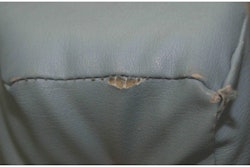For many, summer means barbecues, beaches, and long poolside afternoons. But for the Centers for Medicare and Medicaid Services, summer means proposed updates to the Medicare Physician Fee Schedule (MPFS), a document that can have a sobering effect not only on these lazy summer days, but on the whole year to come.
On June 30, the Centers for Medicare and Medicaid Services (CMS) posted on its Web site proposed changes for the 2009 MPFS. The proposal offers an estimate of what Medicare will pay in 2009: approximately $54 billion to more than 980,000 physicians and other healthcare professionals, down 5% from the $57 billion projected for 2008.
The agency also is projecting a 5.4% decrease in the conversion factor for 2009 if Congress does not override the sustainable growth rate (SGR) formula; if that goes forward without intervention, there will be a total 16% reduction in payment for all services provided under the MPFS in 2009.
Imaging and IDTFs
One of the biggest changes in the proposed rule is a mandate that physician groups enroll as independent diagnostic testing facilities (IDTFs) and be subject to the standards that rule them -- a way for CMS to address imaging utilization and quality issues, according to Pam Kassing, senior director of economics and health policy for the American College of Radiology (ACR).
"Those who are serious about using medical imaging in their offices will do it according to these quality standards," Kassing said. "Others may not want to bother with having to qualify as an IDTF, and may choose not to [offer imaging] anymore."
The result of this proposal (regarding IDTFs) is that physicians and nonphysician medical imaging practitioners who have performed diagnostic testing services for patients in their own offices won't have that option anymore. Instead, they will have to enroll as IDTFs.
"The net effect is that there are going to be two Medicare enrollment categories for the technical component of diagnostic imaging, hospital-based and IDTFs," said W. Kenneth Davis Jr., an attorney at the law firm Katten Muchin Rosenman in Chicago. "CMS is setting aside the past regime where physicians could operate their own imaging centers and not become an IDTF."
Important IDTF standards that will now apply to physician groups include the following:
- Nonphysician staff must be licensed or certified to perform diagnostic imaging services.
- The supervising physician must have evidence of proficiency in the performance and interpretation of each diagnostic test the IDTF performs.
- The IDTF may not share, lease, or sublease its practice location or equipment with another Medicare-enrolled organization.
The fact that the supervising physician must be proficient in the exam being given, as required for IDTFs, represents a big change for nonradiology physician groups providing imaging, Davis said. Because many local Medicare carriers have decided that IDTFs must use radiologists to provide supervision of medical imaging exams, once a physician group becomes an IDTF this standard will apply.
"Under this new rule, in a state where the Medicare carrier has determined that IDTFs must use radiologists for supervision, a nonradiology practice that performs medical imaging will have to have a radiologist come onsite to provide this or will have to refer the exam out of the practice," he said.
And that's a frontal attack on self-referral, according to attorney Thomas Greeson, a partner at law firm Reed Smith of Falls Church, VA. In a July 3 memo to the firm's radiology clients, Greeson wrote, "If adopted as proposed, this rule could result in a significant decline in the number of physician entities that offer diagnostic imaging services to their own patients because it could be difficult for nonradiologist owned offices to secure properly qualified nonphysician personnel."
Will this proposed change affect the imaging landscape? Yes, Davis said.
"This rule could drive a lot of capacity out of the market," he said. "If a nonradiology group can't get a radiologist to come supervise, what's the choice? Sell, or go out of business, or find some way to get a radiologist into your facility."
Anti-markup angst
In the 2008 MPFS final rule published last November, CMS applied the anti-markup prohibition to both the technical component (TC) and the professional component (PC) of diagnostic tests when they are billed by the ordering physician. These provisions were originally planned to take effect on January 1 of this year, but CMS received so many requests for clarification of the provision that it delayed the implementation of its anti-markup changes until January 1, 2009.
Now CMS is proposing two alternatives for revising the anti-markup provisions:
- Anti-markup will apply if either the PC or TC of a diagnostic test is ordered by a billing physician and is either purchased from an outside supplier or is performed or supervised by a physician who doesn't share a practice with the billing physician.
- CMS would maintain its current stance that applies anti-markup provisions to the TC and PC of diagnostic tests performed outside the office of a billing physician or other supplier, but would define this phrase more broadly to include space in which diagnostic testing is performed, if it is located in the same building in which the billing physician regularly provides patient care.
The anti-markup provision intersects with the IDTF mandate, according to Davis. CMS clarified in the proposal's preamble that with respect to the technical component, both the TC and supervision of it have to be provided within the offices of the billing entity; if either one occurs outside the office, then the imaging procedure will be deemed to have occurred outside the office.
"So we come full circle back to the IDTF requirement," Davis said. "If you don't want to be subject to anti-markup, you have to provide the TC and the supervision in your office. And you have to be an IDTF, which means you have to use radiologists to supervise."
The full extent of the proposed rule's effect won't become clear until Congress wrangles out Medicare legislation that will set the SGR. For now, according to CMS, newly enrolling diagnostic imaging providers have until January 1, 2009, before the mandate to become an IDTF goes into effect, while existing providers have until September 30, 2009.
In the meantime, the agency seeks public comment, which it will take until August 29. The final rule will be issued November 1 and will become effective January 1, 2009.
By Kate Madden Yee
AuntMinnie.com staff writer
July 10, 2008
Related Reading
CMS to raise hospital outpatient payments 3%, July 8, 2008
CMS delays Medicare payments due to SGR impasse, July 1, 2008
Beware, AMIC says: The DRA could be the least of it, June 10, 2008
ACR update: Teaching Congress how to fish, May 7, 2008
CMS to cut MPFS payments by 10%, March 12, 2008
Copyright © 2008 AuntMinnie.com




















